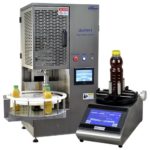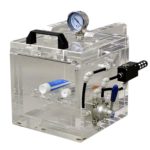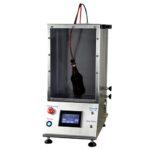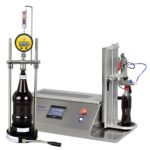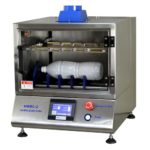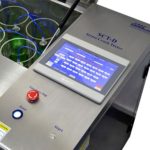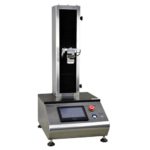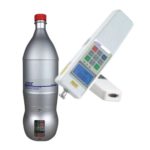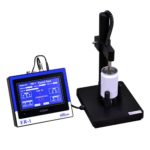CO² and pressure and/or internal vacuum measuring devices
CO2 measuring instruments – pressure/temperature method by Henry’s law
These CO2 measuring devices are based on Henry’s law. They make it possible to measure the pressure of CO2 in gaseous liquids on finished products such as soft drinks (CSD). The process is simple: the device pierces the capsule of the sample with a bevelled tube. Through the tube, a needle and a probe are inserted. They will measure the pressure and temperature. The gas contained in the liquid rises to the pressure probe through the needle hole. After degassing, the bottle is shaken so that the pressure and temperature rise to their maximum. When these two data do not change, the correspondence between pressure and temperature is measured using Henry’s law. We obtain the measurement of pressure and temperature.
In its analog version, the device measures temperature and pressure. The volume of CO2 is calculated with the help of a correspondence table provided. In the automatic version, the device reads the pressure and temperature of CO2 in volume and in grams per liter.
In this range of CO² control devices, AT2E offers the analog model, CO² Easy A (Analog), the CO2 Easy D (Digital) and the fully automatic version, CO² DA (Digital Automatic).
Pressure and Vacuum Gauge (PVG) and Aphrometers
Our pressure and vacuum gauges and aphrometers are equipped with analogue or digital pressure and vacuum gauges for measuring the pressure and vacuum levels in packaging – bottles, flasks, cans, boxes.
